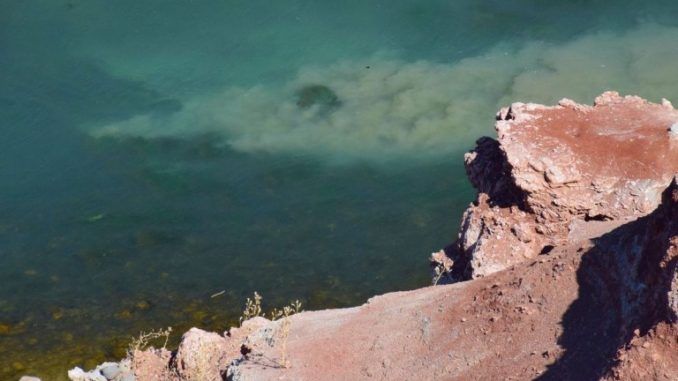
Last month the Shoshone River, near Yellowstone National Park, suddenly and without warning started boiling.
The river changed color and started to emit a sulfuric odor on March 25th.
Geologists and other experts believe that a portion of the river located near Cody, Wyoming had started to boil and that a new Yellowstone vent opened up.

BYPASS THE CENSORS
Sign up to get unfiltered news delivered straight to your inbox.
You can unsubscribe any time. By subscribing you agree to our Terms of Use
The boiling river has cooled down, at least for now. However, earthquake activity in and around the Yellowstone supervolcano is reportedly increasing.
Inquisitr reports:
As Mysterious Universe reports, the boiling river near Yellowstone runs just east of Yellowstone National Park. It is close enough to the park and super volcano to be a “canary in a coal mine” as it relates to unusual geothermic events. The event was initially recorded by Dewey Vanderhoff, a photographer who spotted the Shoshone River near Yellowstone boiling and noted other bizarre features in the river.
“I’ve lived here all of my life and I’ve never seen it. It was pretty impressive. The river right there is a really dark green. With a polarizing filter it really popped out. [It bubbled like] like jets in a Jacuzzi.”
Boiling River Near Yellowstone National Park Heats Worries – https://t.co/PVCQi17tm8 pic.twitter.com/5igfmzZlUF
— Mysterious Universe (@mysteriousuniv) April 14, 2016
The Shoshone River near Yellowstone was also emitting a noxious, sulfuric odor, and the stretch of river that was boiling “like jets in a Jacuzzi” was a dark green color.
This isn’t the first time in recorded history that the Shoshone River near Yellowstone has displayed unusual geological activity, most likely related to its proximity to the national park and caldera. Back in the days of Lewis and Clark, an explorer named John Colter, visited the area. The explorer, also a member of Lewis and Clark’s epic expedition, trekked to the area in 1807 and wrote about what he saw. The Shoshone River, near Yellowstone, was known then as the Stinkingwater River, and according to John Colter, when he visited the portion of the river near Yellowstone, he encountered geysers, hot springs and the trademark sulfur-smell of a volcanic river.
The area is also home to sinkholes, geyser cones, and even abandoned sulfur mines.
Despite the descriptions penned by John Colter in 1807, in the interim two centuries, the Shoshone River near Yellowstone has become all but devoid of geothermal activities. According to Jason Burkhardt, a Wyoming Game and Fish Department biologist, the Shoshone River near Yellowstone is currently experiencing a “lull” in geothermal activity.
“We’re kind of in a lull compared to when John Colter was in this area. There was substantially more geothermal activity that was occurring back then.”
Or at least it was, until March 25, when the Shoshone River near Yellowstone began to boil and emit the tell-tale smell of volcanic activity. The river near Yellowstone national park boiled for four days before the activity abruptly ceased.
The boiling of the Shoshone River for four days in March wasn’t the only recent geothermal event in the river to pique the attention of geologists. Recent activity in and around the area of the river near Yellowstone has reportedly released enough hydrogen sulfide into the water to create a dead zone spanning one and a half miles. The stretch of river is now completely devoid of fish due to what Burkhardt referred to as a “chemical barrier,” which is blocking fish from entering.
Some believe this to be a very bad sign.


